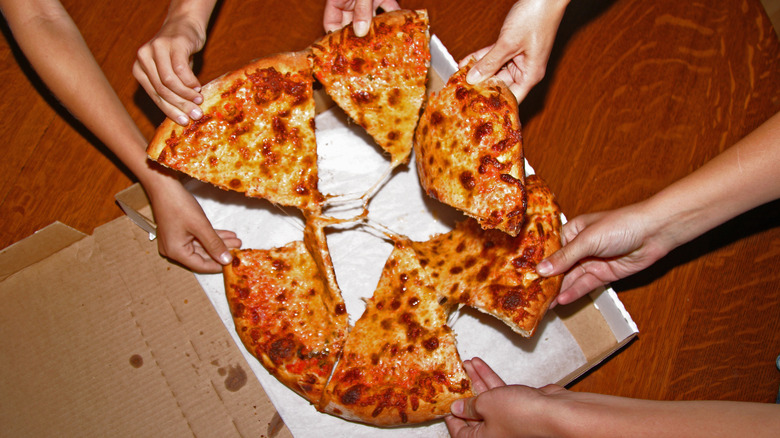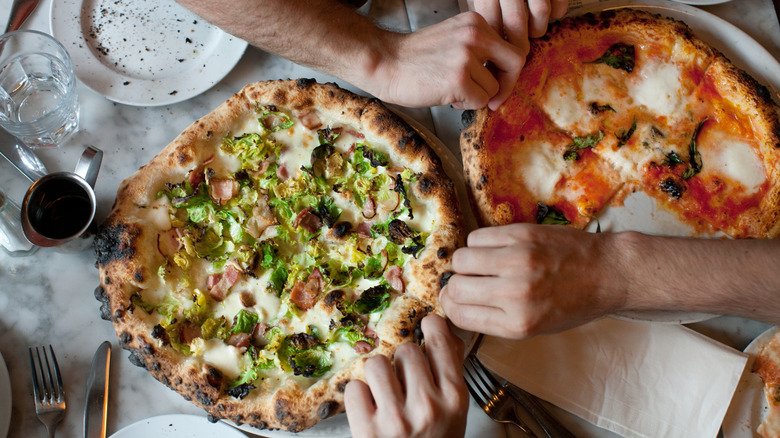Is It Cheaper To Buy 2 Small Pizzas Instead Of One Large?
When ordering pizza, choosing the right size for value can be challenging. While two smaller pizzas might seem like the better choice to get more, a single large pizza generally provides greater value. This is because pizzas are measured by diameter, and the area of a circle increases exponentially with that diameter.
Typically, a single 14-inch pizza provides more surface area than two 10-inch pizzas, making it the more cost-effective choice for customers who want the biggest bang for their buck. Larger pizzas frequently have a lower cost per square inch. This makes them a more financially sound choice for those seeking to maximize their pizza consumption.
The way this is figured is by calculating a pizza's surface area, which requires the formula 𝜋𝑟², where 𝜋 (pi) equals 3.14 and 𝑟 represents the radius (half of the diameter). By using these calculations, a small 10-inch pizza (which has about six slices) has a surface area of approximately 78.5 square inches. That would mean two 10-inch pizzas have a combined surface area of 157 square inches while a large 14-inch pizza (which produces about 10 slices) offers approximately 154 square inches.
To make this more digestible, on average, if a 10-inch pizza costs $9.00, while a 14-inch pizza costs $14.00, it makes more sense to spend $14.00 for nearly the same amount of pizza than to spend $18.00 for only three more square inches.
There are times when one large pizza isn't a better deal
While, in most cases, large pizzas are usually the better deal, there are some outliers in the mix. For example, Domino's, which has an official way to microwave pizza, launched a "Moreflation" campaign, offering customers a 20% increase in pizza size at no extra cost. This initiative counters shrinkflation, a trend where companies reduce product sizes while maintaining prices. Domino's' approach provides customers with more food for the same price, coining the trend of less being more.
Other chains, like Papa John's, Pizza Hut, and Little Caesars also offer deals that may foil the notion that one large pizza is a better deal than two small pizzas. For example, Papa John's offers a Papa Pairings deal allowing customers to order two or more items from their value menu for only $6.99 each. The value menu includes a medium (12-inch) one-topping pizza and other options for $6.99, allowing customers to purchase two medium pizzas for a total of $13.98 before tax –- beating out the one large pizza price.
As a general rule of thumb, you should always look for promotions to save money and keep an eye out for any red flags when selecting your pizza shop. Aside from such promotions, one large pizza typically offers more pizza per dollar. Consumers receive more toppings and cheese while reducing the proportion of crust, creating a better deal overall.


